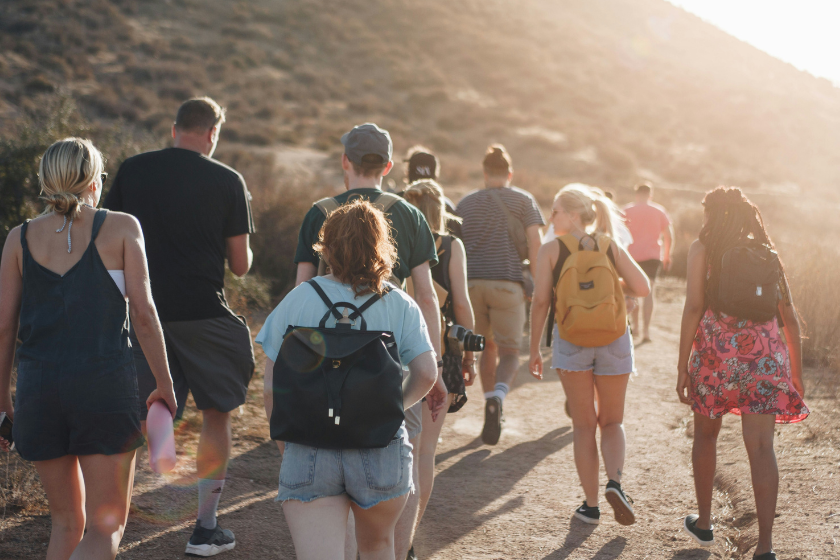International tourism has continued to grow in recent years. While it can of course have a positive impact on the economic development of a region, it can also have harmful effects on the environment and local communities. This is particularly relevant in the case of over-visited tourist sites, which can experience damaged environments and ecosystems, degraded heritage, and a distorted quality of life for local people.
Finding a better distribution of tourist traffic throughout the area and the year has become a major challenge for these destinations. From Venice to Amsterdam, by way of Marseille's Calanques, here's a brief overview of the various measures put in place by different places to cope with their tourist sites reaching capacity.
What solutions have been put in place to combat overtourism?

For some regions, it's no longer a question of developing tourism, but rather of limiting it. Here are 8 bold ideas implemented by destinations around the world to combat overtourism.
1. A move towards charging tourists to visit a destination: the introduction of taxes
Venice is a prime example of a destination suffering from overtourism. Such is the threat to the city and its lagoon that in 2023, UNESCO recommended placing the destination on the List of World Heritage in Danger. Following the introduction of a visitor flow management system, this recommendation has not yet been implemented.
Starting this year, Venice will charge tourists 5 euros for a single day's visit. It is the first city in the world to charge an entrance fee, like a museum or park. This tax is in addition to other measures already taken by the city, such as a visitor quota for access to St. Mark's Square during Carnival, and a ban on larger cruise ships.
2. Introduction of tourist quotas and compulsory bookings
Many tourist sites have been weakened by mass tourism. To minimize their deterioration, more and more destinations are limiting the number of visitors to natural and heritage sites.
Perhaps one of the best-known examples of this is Machu Picchu, which, threatened by erosion, is now limited to 2,500 visitors per day. In addition, tourists must reserve a time slot for their visit, are limited to four hours on-site, and must be accompanied by a licensed guide.
In France, several destinations have also opted for this method. One example is Marseille's Calanques National Park, which since 2022 has required a reservation to access the Calanque de Sugiton, which is also at risk of erosion. Access is now limited to 400 people per day in summer. In addition, since summer 2021, the island of Porquerolles in the Var region (among many others), has introduced a limit of 6,000 visitors per day.
Tourist quotas and compulsory reservations are already the norm for visiting the most popular museums. What if this were to become the norm for natural and heritage sites too?
3. “Demarketing”: dissuasive PR campaigns
When talking about tourism, demarketing is a concept designed to discourage visitors, either temporarily or permanently, from visiting a saturated site. There are several demarketing strategies. The destination may choose to stop marketing altogether, as in the case of the Netherlands, where the focus is now on managing the destination and welcoming tourists, rather than on promotion.
Some destinations, such as Amsterdam, are choosing to market differently, promoting alternative routes to relieve congestion at certain sites, and trying to attract a different type of traveler, one more adept at "slow travel".
Finally, destinations can also choose to use dissuasive messaging. Marseille, for example, has chosen to counter the idyllic image of the Calanques in summer, by presenting the reality as it is on its website. For example, you can read phrases like "difficult to access, small in size, and overcrowded in summer".
4. Regulation of short-term rentals
Here's another initiative to curb mass tourism, this time targeting tourist accommodation, especially short-term rentals. Take Dubrovnik for example. For several years, the city has been swamped by fans of the "Game of Thrones" series, and the city is now banking on balanced tourism. Among the measures taken, the city intends to regulate Airbnb-type seasonal rentals, by banning all new rental permits in the old town.
New York is also one of the cities fighting against short-term rentals, imposing drastic conditions for those renting out accommodation for less than 30 days. These initiatives help to reduce problems and protect the city's real estate assets.
On the accommodation front, Amsterdam and Barcelona have also taken exceptional measures, announcing that they will no longer authorize the construction of new hotel buildings.
5. Restrictions on cruise ships
Between mass tourism and environmental disaster, cruises are no longer fun. To combat the pollution associated with cruise ships and the invasion of cruise passengers onto the streets, more and more destinations are deciding to limit the number of ships authorized to dock in their waters.
For example, the hugely popular Spanish island of Mallorca limits arrivals to its shores to three ships, including a single "mega liner". Since 2019, Dubrovnik has also limited arrivals by sea to two cruise ships per day, with a maximum of 4,000 passengers each. For their part, Amsterdam and Venice have simply decided to ban cruise ships from their waters.
6. Restricting the size of tourist groups
Among the various solutions being tested to combat overtourism, some destinations are turning to the issue of group travel, which causes problems and leads to an over-concentration of visitors in the same place.
This is the case in Venice and San Sebastian, in Spain's Basque Country, which have both decided to limit group sizes to 25 people, and also to ban the use of loudspeakers by guides.
7. Promoting off-season travel
Some destinations are trying to spread out tourist arrivals throughout the year, to avoid summer overtourism. Such is the case of the Network of Great Sites of France, which includes sites such as the Dune of Pilat, Mont Saint-Michel and the cliffs of Étretat, which are betting on off-season tourism by marketing experiences outside the summer period. An increasing number of destinations are launching PR campaigns to promote off-season travel as a** more authentic, more respectful, and quieter experience.**
8. Initiatives to promote local life
Some destinations are also taking smaller measures to combat tourist over-concentration, to enable local residents to regain a certain quality of life. Barcelona, for example, has removed a popular bus route from Google Maps. This route was originally designed for locals, but it was being besieged by tourists wishing to visit Parc Güell.
Another surprising initiative stems from Portofino, a small Italian village of 400 inhabitants which is often overwhelmed by the influx of tourists. Since 2023, a decree has forbidden visitors from walking in "red zones", with a hefty fine for anyone disregarding the zones. The aim is to prevent tourists from lingering to take selfies.
Traveling differently: the role that visitors play in the fight against overtourism

So how can you, as a traveler, take action against mass tourism? There are a multitude of practices in what is known as "responsible tourism", which proposes an eco-responsible approach to travel. Among the various initiatives available, you can opt for more responsible forms of accommodation, such as home exchanging.
Home exchanges not only avoid overconcentration in tourist areas by encouraging travelers to get off the beaten track, and avoid contributing to hotel overbuilding, but they also promote fairer, "slower" tourism.
I'm going on a home exchangeAs a responsible traveler, you can also choose to travel out of season. Not only will you avoid contributing to the over-visitation of sites, but you'll also enjoy a number of advantages such as lower prices, easier contact with locals, no hordes of visitors and so much more.
As far as possible, avoid places that are over-represented in the media or on social networks. In fact, it's a good idea not to geotag your photos when sharing them on social networks, to protect places from overtourism.
Finally, always bear in mind the "Leave No Trace" principle to limit your impact when visiting natural sites in particular. For example, don't leave any garbage, respect wildlife (stay away from animals and don't rip out flora), stay on marked trails, etc.
Are you ready to become a responsible traveler and discover home exchanging? Then sign our traveler's charter!
I’ll sign the responsible traveler charterReferences
¹ World Tourism Organization figures
² UNWTO and ITF - Transport-related CO2 emissions in the tourism sector, 2019
